The Armari Magnetar V25R-RA750G2 uses a really deceptively small chassis. The 400mm depth and 360mm height are fairly normal for a midi-tower, but the system is just 88mm wide – about half as much. However, unlike most small form factor systems, there's a 750W power supply inside and carefully designed cooling, so regular workstation components can be used. The glossy white finish is also rather unique.
Fans on the top draw air from the graphics cards underneath and there's a pop-out filter on the front that can easily be cleaned to ensure optimum airflow. The PSU is not hot-swap, because obviously there's only one of them (note that the picture above shows the 460W version, not the 750W we were sent). But it can easily be slid out and replaced without having to take the side panel off. Removing the side panel shows just how tightly packed the components are inside.
The star of the show is the AMD Ryzen 7 1800X processor. As we have reported in the past, this processor's most significant feature is that it delivers eight physical cores and 16 threads for about half the price of Intel's Core i7 Broadwell-E equivalent.
The Ryzen 7 1800X runs at a native 3.6Hz with a 4GHz boost frequency and 4.1GHz in XFR. Armari hasn't added any permanent overclocking. The AMD processor has been backed by 32GB of 2,400MHz DDR4 SDRAM, in two 16GB modules to take advantage of the dual-channel memory architecture.
The system uses Corsair Vengeance LPX RAM that has been tested to work with AMD Ryzen, since the latter has been found to be a bit picky about memory. You won't need to worry about this yourself, because 32GB is the maximum for the Biostar motherboard. So no upgrade is available. The 32GB quantity is reasonable for a workstation, but it's worth noting that the Intel alternatives of the V25 usually offer more.
The AMD fest continues with the Radeon Pro Duo. As we hinted earlier, this is essentially two Radeon Pro WX7100 cards packaged together, which is what CPU-Z and GPU-Z detect it as. So there are two GPUs with 2,304 Stream Processors apiece, and two lots of 16GB GDDR5 memory, for a whopping total of 32GB. There's a 256-bit memory interface for each GPU, and bandwidth is a reasonably hefty 224GB/sec, although here the top NVIDIA Quadros go a little further.
Although the Radeon Pro Duo will be decent for modelling, its primary reason for existence is with software that is OpenCL-accelerated. To this end, AMD has begun releasing ProRender plugins for various applications. The Blender plugin was available at the time of writing, and was included on our test system, with Maya and 3dsmax also available for free download. Support for ProRender and dual GPUs will be built into the next version of Maxon Cinema 4D too.
The new AMD Radeon Pro Duo, apart from not being as power hungry as the previous card with this name (so it can be air cooled), is also quite a bit cheaper, costing only slightly more than the NVIDIA Quadro P4000. With twice as much memory as the latter per GPU, it's potentially a sensible choice for applications using very large texture sets. It's amazing that this chassis has space for either a dual-width graphics card or two single-width units.
There are two USB 2.0 ports on the front, plus four USB 3.1 on the rear. A PS/2 keyboard/mouse combo port sits alongside two of USB 3.1 ports. There's also a USB 3.1 Type-A alongside USB 3.1 Type C. A single Gigabit Ethernet port is available. Five minijacks plus optical S/PDIF provide eight-channel audio connectivity. Some versions of this chassis also include a built-in breakout box for the HTC Vive (shown above), since this system is particularly targeting VR content creation.
The chassis supports up to three 2.5in SATA drives internally, despite the small size, but Armari has only supplied one storage device with this system, connected to the M.2 NVMe PCI Expres x4 slot. In production systems, this will be a Samsung PM961, which is a very quick drive offering 2,800MB/sec reads alongside 1,600MB/sec writes. But this wasn't available for our sample so a similar OEM drive was included. In the final production version of the V25R (using an ASRock rather than a Biostar motherboard), the M.2 drive will be accessible from a small side panel.
Overall, the specification, design, and appearance of this workstation are all very promising. It feels like a well thought out, quality piece of engineering. But how will it perform?
 KitGuru KitGuru.net – Tech News | Hardware News | Hardware Reviews | IOS | Mobile | Gaming | Graphics Cards
KitGuru KitGuru.net – Tech News | Hardware News | Hardware Reviews | IOS | Mobile | Gaming | Graphics Cards



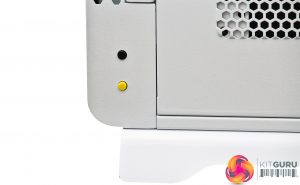





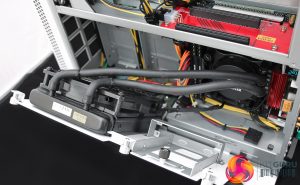





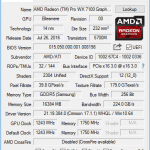
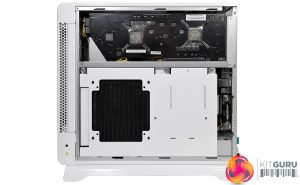





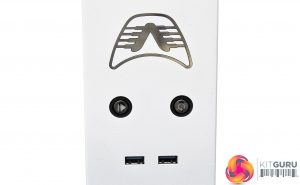





It’s very expensive for a ryzen based system. You can build a standard sized mini tower with a 1070 core at 1000€ less !
Taking ~£ prices:
1800x: £450
Mobo: £110
Ram: £250
nvme: £240
Cooler: £60-95 (unsure if it’s a h60 or h90 140mm from the pics)
SFF plat 750w psu: £150
32gb Radeon pro duo: £999
Windows 10 pro: £150
Case: ?? (50-75 conservative estimate? sff cases tend to be pricey.)
Total: ~£2400 (€2700 or so)
Actual price: ~£3100 (about €3500)
Then whatever you value build / 3 year warranty at. I’m not sure I value them at over £700/€800 though. Price seems excessive for a weak motherboard (biostar aren’t exactly top tier) and no large storage.
And that’s just off the shelf prices from ocuk, I’m sure I could go bargain hunting and get everything a little cheaper, probably settle around £2200 for the same components. Hell, you can grab windows 10 pro keys on the likes of reddit for about £20, that’s over a £100 saving alone. Then factor in how much cheaper buying bulk components with no retail tax / vat on them is, I’d say they’re charging well over the cost per unit for these.
I’d say it’s close on £1000 overpriced with its current components, with a gpu less than half the cost of the one it comes with, I’d say it’d be more like £1500 cheaper.
Armari’s systems are expensive, but take a look at that chassis. It’s a custom design that’s better than what the blue chip workstation manufacturers have to offer. The company also offers support for professional applications, which you definitely won’t get buying the components yourself. I think one thing in particulary you have wrong in the pricing above is the PSU. It’s actually pretty pricey because getting the kind of industrial strength PSU in 750W form and that small is expensive – it’s a server PSU. That’s an area I know Armari is looking into. You also forgot to add VAT! The price quoted is inc VAT. It’s £2,599 ex VAT, so you’re only paying a £200 premium ex VAT for the chassis, server PSU, and 3D content creation-focused service and support. Professionals would pay that premium to have a system they can trust.